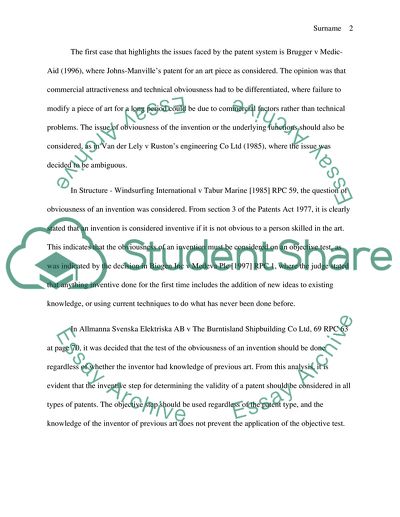Retrieved from https://studentshare.org/law/1597240-inventive-steps-intellectual-properycritically-discuss-the-requirement-for-an-inventive-step-in-section-3-patents-act-1977
https://studentshare.org/law/1597240-inventive-steps-intellectual-properycritically-discuss-the-requirement-for-an-inventive-step-in-section-3-patents-act-1977.


